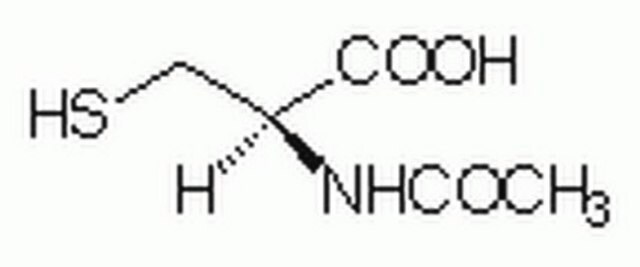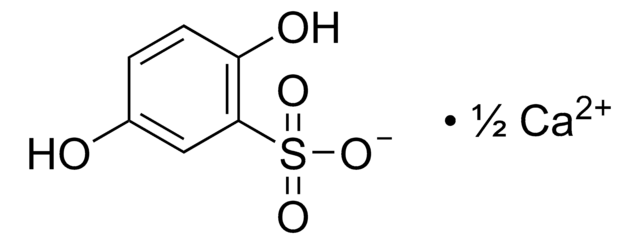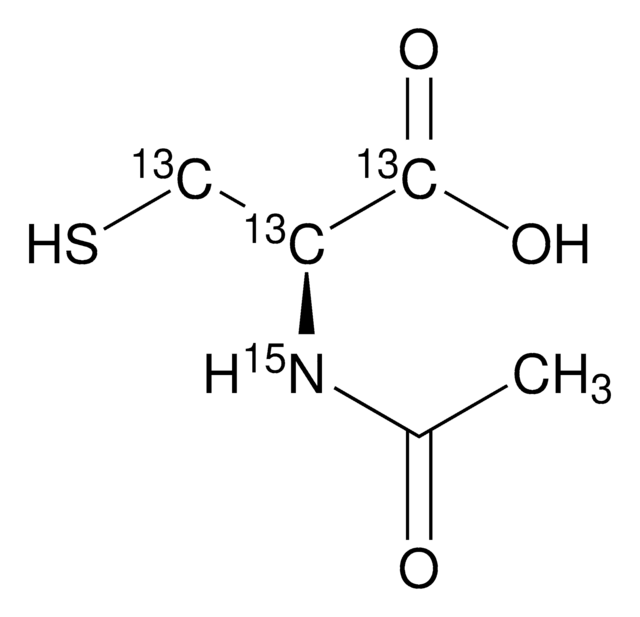1009005
USP
Acetylcysteine
United States Pharmacopeia (USP) Reference Standard
Sinónimos:
N-Acetyl-L-cysteine, LNAC, NAC
About This Item
Productos recomendados
grade
pharmaceutical primary standard
API family
acetylcysteine
manufacturer/tradename
USP
mp
106-108 °C (lit.)
application(s)
pharmaceutical (small molecule)
format
neat
storage temp.
2-8°C
SMILES string
CC(=O)N[C@@H](CS)C(O)=O
InChI
1S/C5H9NO3S/c1-3(7)6-4(2-10)5(8)9/h4,10H,2H2,1H3,(H,6,7)(H,8,9)/t4-/m0/s1
InChI key
PWKSKIMOESPYIA-BYPYZUCNSA-N
¿Está buscando productos similares? Visita Guía de comparación de productos
General description
Application
Also used to prepare standard stock and standard solution for assay by using the liquid chromatography method in conjunction with uv detector according to the given below monographs of United States Pharmacopeia (USP):
- Acetylcysteine Solution
- Acetylcysteine
- Acetylcysteine Compounded Solution
Biochem/physiol Actions
Analysis Note
Other Notes
signalword
Warning
hcodes
Hazard Classifications
Eye Irrit. 2
Storage Class
13 - Non Combustible Solids
wgk_germany
WGK 2
flash_point_f
Not applicable
flash_point_c
Not applicable
Certificados de análisis (COA)
Busque Certificados de análisis (COA) introduciendo el número de lote del producto. Los números de lote se encuentran en la etiqueta del producto después de las palabras «Lot» o «Batch»
¿Ya tiene este producto?
Encuentre la documentación para los productos que ha comprado recientemente en la Biblioteca de documentos.
Los clientes también vieron
Nuestro equipo de científicos tiene experiencia en todas las áreas de investigación: Ciencias de la vida, Ciencia de los materiales, Síntesis química, Cromatografía, Analítica y muchas otras.
Póngase en contacto con el Servicio técnico








